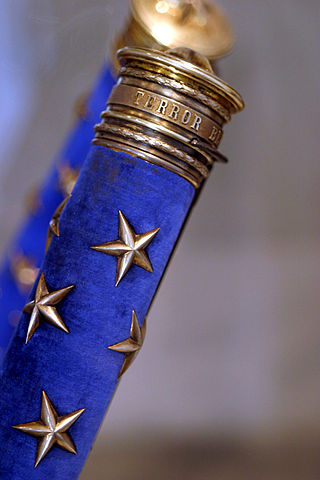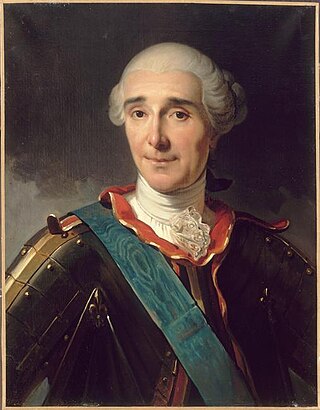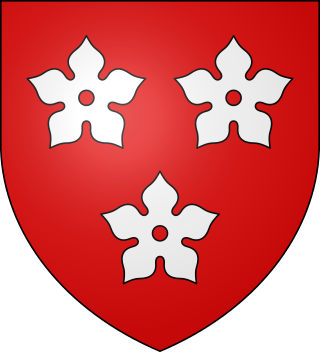
Marshal of France is a French military distinction, rather than a military rank, that is awarded to generals for exceptional achievements. The title has been awarded since 1185, though briefly abolished (1793–1804) and for a period dormant (1870–1916). It was one of the Great Officers of the Crown of France during the Ancien Régime and Bourbon Restoration, and one of the Grand Dignitaries of the Empire during the First French Empire.

Robert William Vonnoh was an American Impressionist painter known for his portraits and landscapes. He traveled extensively between the American East Coast and France, more specifically the artists colony at Grez-sur-Loing.

Grez-sur-Loing is a commune in the Seine-et-Marne department in north-central France.

The Constable of France was lieutenant to the King of France, the first of the original five Great Officers of the Crown and the commander-in-chief of the Royal Army. He was, at least on paper, the highest-ranking member of the French nobility.

Gacé is a commune in the Orne department in Lower-Normandy, north-western France.

Gaspard I de Coligny, Count of Coligny, seigneur de Châtillon (1465/1470–1522), known as the Marshal of Châtillon, was a French soldier.

The Route nationale 7, or RN 7, is a trunk road (nationale) in France between Paris and the border with Italy. It was also known as Route des vacances, Route bleue, and — sarcastically, during the annual rush to the Mediterranean beaches — the Route de la mort.

Bellou-en-Houlme is a commune in the Orne department in northwestern France.

Le Merlerault is a commune in the Orne department in north-western France.

Briouze is a commune in the Orne department of Normandy in northwestern France. It is considered the capital of the pays d'Houlme at the western end of the Orne in the Norman bocage.

Messei is a commune in the Orne department in north-western France.
The crown lands, crown estate, royal domain or domaine royal of France were the lands, fiefs and rights directly possessed by the kings of France. While the term eventually came to refer to a territorial unit, the royal domain originally referred to the network of "castles, villages and estates, forests, towns, religious houses and bishoprics, and the rights of justice, tolls and taxes" effectively held by the king or under his domination. In terms of territory, before the reign of Henry IV, the domaine royal did not encompass the entirety of the territory of the kingdom of France and for much of the Middle Ages significant portions of the kingdom were the direct possessions of other feudal lords.
Louis de Conflans, marquis d'Armentières was a French general. He was promoted to lieutenant général in 1746 and was made a marshal of France in 1768.

Guy Michel de Durfort, 2nd Duke of Lorges was a French general and nobleman. He was duke of Lorges and duke of Randan and was made a marshal of France in 1768.
Robert de Fiennes, named Moreau (1308–1385) was the 28th Constable of France.

Mathieu III de Triewas a 14th-century French military and political leader. He was the lord of Araines, Fontenay, and Vaumain, as well as being the 27th Marshal of France.

Fernande Sadler was a French painter and engraver. She established the art collection at Grez-sur-Loing and became the mayor of that town in 1945.

Foulques or Foucaud du Merle was a Marshal of France. He was Seigneur of Gacé and Bellou-en-Houlme, and Baron of Le Merlerault, Briouze and Messei.

Jean IV de Beaumont was a Marshal of France.

Claude-Guillaume Testu, Marquis of Balincourt was a French military officer and a marshal of France.

















